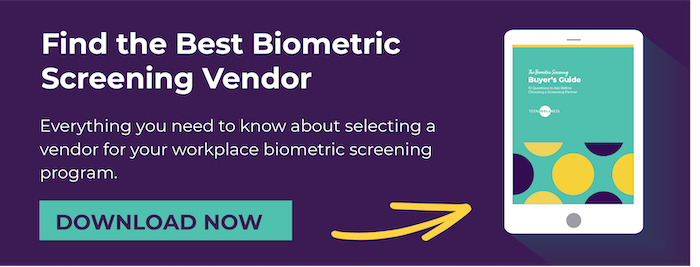Health risk assessments (HRAs) have been around since the 1970s. Over the years, they were used as a supportive tool for physicians in discussing health with their patients. Today, the HRA is a self-reported measurement aide that helps to identify individual health risks based on questions about lifestyle, demographic characteristics, family history, physiological data and overall attitudes towards their wellness. ![]()
A health risk assessment is an excellent way to get employees thinking about their health and taking responsibility for their lifestyle choices; however, we don't necessarily believe it's the best way. The biggest problem is the data is self-reported, which leaves the results ripe for human error. In fact, a 2008 Healthways study took a look at 23,061 individuals from 63 employers who completed two consecutive annual screenings of 13 biometrics and health risk assessment (HRA) questionnaires. Self-reported health status was determined from HRA data at a baseline assessment. Individuals who reported “fair” or “poor” overall health were categorized as “at risk” by self-report. Only 11.1% of the population fell into this category, although the results from biometric screenings indicated that 44.6% were actually “at risk”. When they looked at smoking status and compared the self-reported data with the biometric data, results indicated that 18.3% of members with positive nicotine tests did not report themselves as smokers.
Biometric screenings provide a far more accurate estimate of your employees' health. The data collected is in real-time and relevant, and offers the opportunity for a teachable moment that can have true impact on the participant. Instead of focusing on health risks in a pen-and-paper assessment, these screenings provide a place for an active, positive discussion about the employee's health opportunities.
When it comes down to it, a health risk assessment is really just a list of 60+ questions that the employee already knows the answers to. If you have to focus your wellness program on one big initiative, make it something that will give participants that moment of true realization and the chance to motivate them to intrinsically change their behaviors and value their overall health.
We do understand the value of a health risk assessment in the big picture of a large, overall wellness program, which is why we offer them within the constructs of our wellness portal. There, the HRA has more validity; employees are able to track their goals, their biometric data and incentives all in one highly customized interface. This also gives employers the ability to cross-reference the biometric data with the self-reported data without adding a lot of administrative or financial burden.
Does your company offer an HRA and/or biometric screenings? What has your experience been like with these wellness initiatives? Comment below! 


